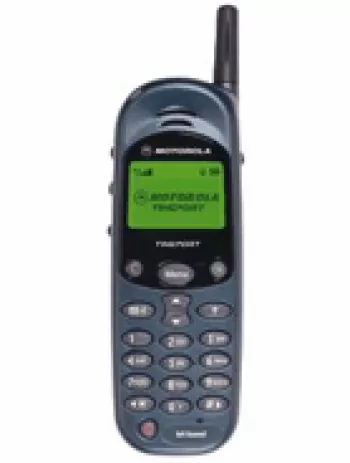
Overview of the Motorola MT710 ZHILING
The Motorola MT710 ZHILING, released in early 2010, represents an interesting development in mobile technology at the time. With its Android-based OPhone 1.5 operating system, the device boasted a range of features that were directed towards the growing smartphone market in Asia. Catering to the needs of multimedia enthusiasts and internet users, the MT710 sought to strike a balance between functionality, style, and affordability.
Design and Build
The physical design of the Motorola MT710 ZHILING is characterized by its distinctive measurements and weight, coming in at 118 x 59.5 x 12.3 mm and weighing approximately 125 grams. This weight provided a substantial feel without being overly bulky, a desirable trait in 2010. The phone features a mini-SIM slot and comes in elegant black and red colors, giving users a choice to suit their personal style.
Display
The device sported a TFT resistive touchscreen, which was typical for smartphones in that era. The 3.7-inch display, with a screen-to-body ratio of approximately 53.7%, offered a resolution of 480 x 854 pixels, leading to a pixel density of around 265 pixels per inch. This made the display adequately crisp for its time, suitable for standard multimedia usage and internet browsing.
Performance and Software
Powering the Motorola MT710 was a 624 MHz Marvell PXA310 processor, which was considered efficient for day-to-day tasks during its release. The device ran on an Android-based OPhone 1.5 platform, contributing to its customization capabilities and access to a variety of apps compatible with the operating system at the time. Despite its relatively modest 256MB RAM, the phone's performance was optimized for basic applications and media consumption.
Camera Capabilities
The MT710 ZHILING housed a 5 MP main camera, equipped with autofocus and a dual-LED flash. This camera setup typically provided decent photo quality in well-lit conditions and basic serviceable photos in less ideal lighting situations. Video recording at 320p and 25fps, although not groundbreaking, allowed for capturing moments reasonably well. A front-facing camera was available primarily for essential use, given the technology constraints of that period.
Storage and Memory
Regarding storage, the Motorola MT710 posed an internal capacity of 4GB, supplemented by a dedicated microSDHC slot which supported expandable storage. This capability was useful for users who relied heavily on media like pictures, music, and basic apps, offering flexibility in storage management. The 256MB RAM, though minimal by modern standards, was sufficient given the app and software demands of the early 2010s.
Connectivity and Network Technology
The MT710 ZHILING supported GSM and HSPA networks, a standard among devices of its kind, allowing users to access efficient 3G data services. It featured GPRS and EDGE capabilities, along with WLAN connectivity through Wi-Fi 802.11 b/g, providing satisfactory avenues for mobile internet usage. Bluetooth 2.1 with A2DP enabled wireless communication, and the device included A-GPS for navigation services, making it competitive in connectivity standards.
Multimedia and Additional Features
The phone was equipped with features catering to multimedia needs, including a loudspeaker and a standard 3.5mm headphone jack—a staple for music and media lovers. Additionally, the presence of stereo FM radio with RDS offered entertainment avenues for users without requiring internet access.
Battery Life
A removable Li-Po 1140 mAh battery powered the MT710, which supported up to 150 hours on standby and about 5 hours of talk time. While modest by modern comparisons, this was adequate for users at the time given the phone's hardware and software characteristics.
Legacy and Market Impact
When examining the legacy of the Motorola MT710 ZHILING, it holds a place as an intriguing step in Motorola's history of international market strategies, particularly in Asia, where Android-based systems were gaining substantial traction. Priced at around 230 EUR, it was positioned in a mid-range market segment offering decent specifications for its cost frame. While no longer produced, the MT710 provided essential insights into user preferences and smartphone ecosystems during that period.
Key Features of Motorola MT710 ZHILING
- Network Technology: Supports GSM and HSPA
- Display: 3.7-inch TFT resistive touchscreen with 480 x 854 pixels resolution
- Operating System: Android-based OPhone 1.5
- Processor: 624 MHz Marvell PXA310
- Memory: 4GB internal storage with 256MB RAM; microSDHC support with 4GB included
- Main Camera: 5 MP with autofocus and Dual-LED flash
- Connectivity: Wi-Fi 802.11 b/g, Bluetooth 2.1 with A2DP, GPS, A-GPS
- Audio: Stereo FM radio with RDS, 3.5mm jack
- Additional Features: Accelerometer sensor, HTML Browser
- Battery: Removable Li-Po 1140 mAh battery with up to 5 hours talk time
- Physical Dimensions: 118 x 59.5 x 12.3 mm, 125 g weight
- Available Colors: Black, Red
Disadvantages of Motorola MT710 ZHILING
- Discontinued status makes it difficult to find support and parts.
- Resistive touchscreen technology is less responsive compared to capacitive touchscreens.
- Runs on outdated Android-based OPhone 1.5, limiting app compatibility and updates.
- Low processor speed at 624 MHz may result in slower performance.
- Limited RAM of 256MB, restricting multitasking capabilities.
- Video recording resolution is low at 320p@25fps.
- Small battery capacity of 1140 mAh, leading to shorter battery life.
- Heavy weight at 125 g for a device from 2010.
- Screen-to-body ratio is low at approximately 53.7%.
- No advanced sensors available beyond an accelerometer.


View Also
More Phones
All Rights Reserved +14266 Phones © Mobilawy 2025

























